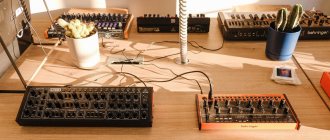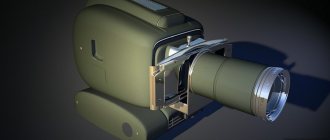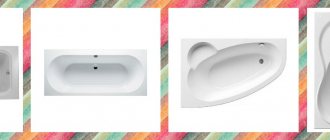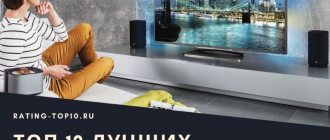| Place | Name | Characteristics in the rating |
| The Best Synthesizers for Beginners |
| 1 | YAMAHA PSR-E263 | The best synthesizer for beginners |
| 2 | CASIO CTK-6200 | Best functionality |
| 3 | CASIO CTK-7200 | The widest functionality in this price range |
| 4 | Medeli M17 | Learning function 110 melodies |
| The best synthesizers for professionals |
| 1 | YAMAHA PSR-S975 | Full-fledged arrangement station |
| 2 | KORG Pa600 | The best ratio of price and functionality |
| 3 | Roland FA-06 | Smallest mass |
| The best synthesizers for kids |
| 1 | CASIO SA-78 | 100 tones. Learning function |
| 2 | CASIO SA-77 | The most popular |
| 3 | CASIO SA-47 | The most compact synthesizer |
All people love music in one form or another. The majority, of course, are simple listeners who are unlikely to be very interested in this article. But there are among you, dear readers, musicians who probably know such an instrument as a synthesizer.
For those who don't know, the synthesizer is something of a Swiss Army knife in the world of musical instruments. It can be used to imitate almost any traditional instrument. It could be a piano, a bass guitar, drums, and much more. In addition, synthesizers can also play accompaniment and apply various effects to the sound. In general, masters of their craft using a high-quality instrument will be able to create a full-fledged work even alone! Of course, some professional musicians are skeptical of this device, blaming it for the “wrong” sound, but let's be honest - the vast majority of us simply cannot distinguish a real instrument from the sound of a synthesizer. And progress does not stand still, and therefore an increasing number of amateurs and professionals use these electronic musical instruments in their creativity.
Synthesizers come in many categories, but we'll focus on just three of them: synthesizers for beginners, kids, and professional instruments. Our rating will help you choose the best device in each price category. But first, let's look at the best manufacturers.
The best synthesizer manufacturers
- Yamaha _
The history of the company dates back to 1887, when Thorakusu Yamaha, the founder, manufactured a high-quality organ. Now the Japanese company also produces a variety of motorcycles and sports equipment, but the music division is one of the main ones. The excellent quality of synthesizers, good sound and reasonable prices have made Yamaha synthesizers the favorites of many musicians around the world. - Korg .
And again we have a Japanese company. The history of this company is relatively short - Korg was founded only in the early sixties, but has already managed to win enormous recognition from famous musicians. The main advantages of the company's models include a sampler, a built-in high-quality sound reinforcement system, and much more. For example, the Korg Triton Studio workstation is currently considered one of the most powerful in the world. - Roland .
I think there is no need to name the country where this company comes from. The Japanese have once again managed to create excellent products, including not only synthesizers, but also other musical equipment. The main distinguishing feature of Roland models is their reasonable price and rather small dimensions and weight compared to competitors. - Casio .
In 1957, this company became one of the very first to dare to produce a completely electronic calculator. Currently the company produces calculators, watches and musical equipment. The latter is not very popular among professional musicians, but the quality of the products is at a very high level and is constantly growing.
The Best Synthesizers for Beginners
The instruments from this group are addressed not only to beginning musicians, but also to those who would simply like to “strum” for their own pleasure. Their device is relatively easy to understand, because the functionality does not have a huge variety, like on professional devices, and the price is affordable enough for buyers to afford such a device simply as a toy.
Such models are also suitable for amateur musicians who, as a rule, do not have extra funds to purchase expensive equipment. Still, we are not considering children’s models, but full-fledged working tools with high-quality sound.
The competition among manufacturers in this segment is quite high, and therefore we recommend that you familiarize yourself with our top three synthesizers for beginners in the ranking.
KingKORG
Korg called its method XMT (eXpanded Modeling Technology) - a new stage in the development of MMT (Multiple Modeling Technology), with which Radias and MicroKorg operated. XMT refers to a sound modeling engine that produces the widest range of tonal variations. KingKORG is loaded with algorithms containing combinations of different types and numbers of generators, greatly simplifying the process and producing as many results as could not be achieved by tuning each generator separately. Oscillator algorithms generate standard waveforms and noise, in addition to which the synthesizer is equipped with additional PCM samples and DWGS algorithms.
KingKORG gives an initial selection of 126 waves: 32 analog rocks, 64 DWGS waveforms (Digital Waveform Generator System was invented by Korg back in the 80s - the era of serious digital competition with the Yamaha DX7) and 30 PCM (Pulse Code Modulation) samples. By adjusting the parameters, analog waves can be transformed into supersaw or PWM waves. DWGS waves themselves are dual oscillators that can be detuned or made subject to VPM (Variable Phase Modulation) to create a new range of all sorts of sounds. PCM samples, in turn, are provided with a useful additional set of derivative waves of all kinds. It is worth noting that the synthesizer is bitimbral and allows you to divide the keyboard into 2 zones with different sounds.
Analog modeling technology also paid special attention to the filter section, designed for 18 modes, 5 of which were invented specifically for KingKORG, and the rest are modeled after the filters of famous synthesizers, including Minimoog, Prophet 5, SEM, MS-20 and TB-303 .
The modulation matrix offers 6 "virtual patches" with 12 sources: 2 envelopes, 2 LFOs (each with 7 waveforms, including random as well as sample and hold functions, frequency range from 0.01Hz to 100Hz), dual-axis joystick ( Y+ and Y- as different sources), intensity, keyboard tracking, 3 MIDI controller capabilities - all of this can be routed to at least 41 destinations.
Despite the sound of excellent quality, which adequately copies the original analog synthesizers, KingKORG did not cause a surge in sales on the market and, judging by the reviews, this is not entirely fair. The synthesizer has already been called underrated, however, in our opinion, it is capable of a lot, both in the studio and on stage, and its only drawback is the lack of a built-in sequencer. We see its main use as a solo synthesizer, since it does not have separate outputs for voices (only 1 stereo pair 1.4"/6.3mm). There is 1 CV/Gate output and KingKORG can send control signals to an external synthesizer, at the same time there are no CV inputs and it can only be slave via MIDI. Like the Microkorg family of instruments, the KingKORG has a vocoder function and an XLR microphone input.
Even a beginner can understand the controls - the front panel contains encoders for all main functions, as well as 3 monochrome text displays - one main and 2 auxiliary. All control elements are divided into groups and conveniently located: effects section; section for selecting timbres, splits and arpeggios; large oscillator control section with a separate screen; filter section (also with dedicated display) and amplifier, LFO and ADSR envelopes.
Experts should not be intimidated by the lightweight body - KingKorg is as invulnerable as its creators, who ignore ambiguous remarks about the name. Its power element is the chassis and aluminum front panel. As for the unconvincing plastic and budget keyboard, the KingKorg was not initially positioned as a professional keyboard for a pianist, and if the need for an external power source seems like an undignified characteristic, then it’s worth trying to be distracted by the strengths of the instrument, which Korg certainly has enough of.
Many pay tribute to the depth of its phonic palette, not only the sounds themselves, but also the ability to combine analog waves with PCM samples, use three tones in one "Timbre" (in other words, 3 oscillators per voice), doing anything, for example, taking 2 different synth tones, detuning them, overdubbing a sampled instrument and, without resorting to menu digging, adding effects that meet all quality requirements (including powerful tube effects through a real lamp). Korg didn’t try to replace the sound of their DW8000 or Space Echo, or other top representatives of the analog era, and in someone’s studio KingKORG would probably be lying on the sidelines - waiting for them to take it with them instead of all these studio veterans or a pile of monofunctional devices. tour. Except that the price of $1000 exceeded the cost of some of its closest competitors. But a new version with a black front panel has been announced - KingKORG BK.
The best synthesizers for professionals
Professionals are demanding people who can do a lot, and therefore the functionality of entry-level synthesizers is no longer enough for them. Manufacturers develop high-quality tools especially for them, which, unfortunately, cost a lot of money. What is the reason for the increase in cost by at least 4-5 times?
First of all, it is worth noting that the functionality has expanded significantly. The models in our rating are able to reproduce, record and process approximately 10 times more sounds. At the same time, no one will teach you how to use all this, so there is no place for beginners here. Secondly, the presence of professional ports, which provides better sound quality. And yes, in this category, rare models have built-in acoustics. We bought a synthesizer for 100 thousand - if you please, buy high-quality speakers or headphones for it. Finally, quality - without exception, all models for professionals will have excellent build quality and sound, as well as high reliability. You can look at the best synthesizer models for professionals in our rating.
Children's models
CASIO SA-47
Allows the child to take his first steps in the musical world more easily. The design has 32 small keys, which are well suited for children's fingers, but in terms of sound quality, this synthesizer is quite good. Its sound range includes 100 timbres, 50 different musical styles, and 8-note polyphony. In addition, the instrument has 5 buttons responsible for drums, a reed organ mode and a piano mode with a switching function. Due to its compact dimensions, this synthesizer is ideal for young musicians.
More: Top 10 best smartphones for children, how to choose a children's smartphone
The weight of the device is small, the keys have a soft stroke, which allows the baby to play on it for a long time, and the fingers will not feel tired. The main thing is to place the synthesizer on a flat surface before turning it on; it will not slide on it due to the presence of rubberized feet. The design is made in retro style. The case is made of high-quality silver plastic with a matte finish, on which dust, fingerprints and other types of contamination will not be visible. There are also reliable and fairly powerful speakers that provide good quality sounds. It is worth noting that the synthesizer is equipped with a liquid crystal display on which you can read all the information necessary for the user. The device has a training mode: it includes 10 melodies that the baby is asked to repeat. If necessary, you can connect headphones.
Advantages:
- Excellent sound quality;
- Small overall dimensions;
- An informative liquid crystal display is provided;
- High-quality assembly;
- The weight is quite suitable for a small child;
- Powered by batteries or accumulators, can be powered from the mains.
Flaws:
- Some users feel that the speakers sound quiet.
CASIO SA-47
2. Shantou Gepai HS5416A
For a children's model, this design has a fairly large range of capabilities: 12 educational-type demo tunes are stored in the memory of this synthesizer. There are over two hundred key settings, exactly the same number of rhythm settings, and 7 types of drums at once. It is possible to change the volume and tempo. The child, if desired, can record a melody he has invented into the equipment’s memory, and then play it back. Like all other children's synthesizers, it has a very convenient learning function and a number of sound effects. The device comes with a microphone. The synthesizer can be powered by six AA batteries or by a power cord (the latter is supplied with it).
Of course, such a toy cannot be compared with a professional musical instrument, but it has a wide set of keys - 54 pieces, just like a classic piano. They are located quite compactly, so the child does not have to strain his hands too much to reach the desired key or play the required chord. There is no liquid crystal display here, but all the functions are already clear - the buttons are labeled. The device has a built-in acoustic system consisting of two speakers that produce stereo sound. If necessary, you can connect headphones to the synthesizer. As users note in their reviews, this model is well suited for both children and adults who are just beginning to be interested in music and playing various instruments.
Advantages:
- Many different operating modes;
- 54 keys;
- Possibility to work both from the mains and from batteries;
- Reliability and durability.
Flaws:
- May slip on the surface.
Shantou Gepai HS5416A
CASIO SA-78
This is a fairly high-quality synthesizer, despite the fact that it was originally created specifically for children. First of all, the manufacturers took good care of children's safety. The speakers are protected in such a way that a child cannot reach them in any way. The body is made of high quality matte plastic. The buttons are all made of soft rubber with a sensitive touch. The keys are made of glossy plastic, a little easily soiled, but this is not critical. There are 44 of them here.
The synthesizer runs either on batteries or on a special 9.5 V 1 A adapter, which is connected to a special connector located next to the headphone jack. If necessary, you can connect external speakers, which can significantly improve the sound quality of the device. The weight of the device is small - together with six batteries it barely reaches one and a half kilograms. The case has very convenient recesses for carrying it. Even a three-year-old child can easily carry it from place to place without straining himself. At the same time, the device has five additional buttons responsible for the percussion instrument mode, and there are tempo and volume controls. The central part of the device has a monochronous liquid crystal display. It displays a metronome indicating rhythm, staff and other useful information. In addition, there is a large yellow button that switches between piano and organ modes. If the synthesizer is turned on without use for five minutes, it will automatically turn off.
Advantages:
- Small overall dimensions and weight of the device;
- Quite acceptable sound quality;
- Works both from the network and from batteries;
- Can be used by adults too.
Flaws:
- Not detected.
CASIO SA-78
Clavia Nord Lead 4
Not the Clavia Nord Lead 4 with a price tag of over $2,000. It is often said that the concept of a “virtual analogue” appeared in 1995. thanks to Nord Lead. This was a good period for samplers, a difficult period for analogue, which was rapidly losing its audience, and even more difficult for expensive technologies for its emulation. In our opinion, the primacy of Nord Lead is a controversial fact, because it was precisely in those years that analogue modeling synthesizers with similar functions appeared among the great Japanese trio - Roland JP-8000, Yamaha CS1x, Korg Z1, and, of course, in a short time and without a technical background it is impossible to create such tools.
However, let's return to Nord Lead. In addition to the modeling technology that was just beginning to gain popularity, the tool offered another rare feature at that time - a control panel loaded with real-time control controls.
Its modern descendant, the Nord Lead 4, features oscillators that retain the architecture of previous models, eliminating the wave shaping capabilities of the Nord Lead 3. To compensate, Clavia has increased the number of digital waves (like those produced by the classic PPG or Korg DW line) of the first oscillator up to the stated 128. The second oscillator acts as a noise generator for additional waves of the first. Lead 4 has lost ring modulation, but has 3 FM modes, which should rather be called cross modulation. The filter offers 7 modes, including 12dB and 24dB, Minimoog and Roland TB-303 emulations, 4 levels of keyboard tracking and a pressure-sensitive two-pole ADSR loop oscillator.
The synthesizer has good Split&Layer capabilities, allowing you to organize up to 4 sound layers, each of which has independent effect settings, as well as the ability to output the audio signal of each layer through a separate 1.4" output. Layers can be used both in total, creating a multi-layered sound rich in palette, and by assigning 4 zones on the keyboard to obtain different complementary sounds. And endless variations of sound waves without having to run across the keys at the speed of a virtuoso pianist will help you create arpeggiator and LFO patterns.
Lead 4 is the first synthesizer in the series to have a built-in effects section consisting of an overdrive, a compressor, a beat crusher and two types of formant effects. The “macro” control function, which allows the source to modulate several parameters simultaneously, is called “Morph” by Clavia, which is responsible for gradual adjustments such as vibrato depth or reverberation saturation. Impulse Morph allows you to assign multiple parameter changes (soundwave transformations), such as filters or effects, to the press of a single button or pedal, as well as the movement of the modulation wheel, for later recall in a live performance. Nord Lead 4 has another interesting feature - the “Mutator” software generator, which takes the initial program and transforms it to a certain extent with an intensity of the user’s choice, resulting in a new program with completely different textures.
At $2,300, the Nord Lead 4 could have invested a little more in the key section of the faceplate, but Clavia continued to focus on its unconventional control zone, allowing you to twist the sound any way you want. Many who tried Lead 4 were actually carried away by the capabilities of the arpeggiator and were satisfied with the sound, agreeing that among comparable virtual analogues, Nord is the best at imitating electrical circuits - in certain cases, his voices could easily replace retro synths of the 80s.
If you really want to try a synthesizer from this Swedish manufacturer, but don’t have enough money, Klavia has provided for this option and offers Nord Lead A1. It costs $1800, and in terms of capabilities it is practically not inferior to its more expensive brother, having only simpler ADR/ASR envelope processors instead of ADSR, fewer LFO and FM capabilities, and no PWM at all for the main audio frequency generator. At the same time, Lead A1 has amplitude modulation, which is absent in Lead 4 and, oddly enough, even surpasses it in terms of polyphony - 26 voices versus 20.
Tips for choosing
Several recommendations will help you make the right purchase and not regret your choice after a while:
- First of all, pay attention to the dimensions and weight. If you stick to a permanent installation, then they do not play a big role, but if you plan to transport them frequently, then it is better to take a compact and lightweight synthesizer.
- Pay attention to the number of keys, since the number of octaves depends on them. A serious game requires 61 keys, while learning requires 32.
- The presence of auto accompaniment will be an additional plus. It adapts to the chosen style and allows you to add your own arrangement.
- Keys can be mechanical, dynamic, hammer and touch. Each type has its pros and cons, which are worth studying in the store and choosing a convenient type.
- A sequencer is an additional module in a synthesizer that provides real-time recording of a piece.
- The presence of backlighting facilitates quick study of works.
- The more tones, the more sounds the synthesizer can produce.
- The presence of additional effects allows you to stretch the wave or play a chord with a large number of copies. The number varies from 3 to 50.











